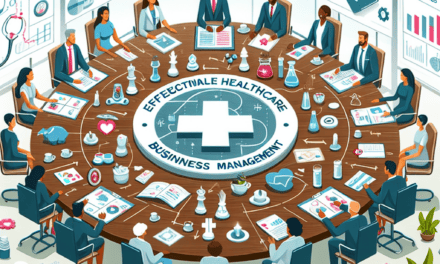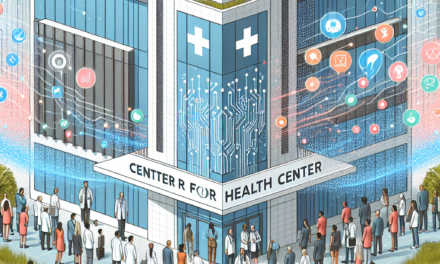Enhancing Patient Satisfaction Through Billing Transparency
In the ever-evolving landscape of healthcare, patient satisfaction has emerged as a critical metric for success. One of the most significant factors influencing patient satisfaction is billing transparency. As patients become more engaged in their healthcare decisions, understanding the costs associated with their care has become paramount. This article explores the importance of billing transparency in healthcare, its impact on patient satisfaction, and strategies for healthcare providers to enhance transparency in their billing practices.
The Importance of Billing Transparency in Healthcare
Billing transparency refers to the clear and open communication of healthcare costs to patients. It encompasses providing detailed information about the prices of services, procedures, and medications before they are rendered. The importance of billing transparency can be understood through several key points:
- Empowerment of Patients: When patients have access to clear billing information, they can make informed decisions about their healthcare. This empowerment leads to greater patient engagement and satisfaction.
- Reduction of Financial Anxiety: Uncertainty about medical bills can cause significant stress for patients. Transparent billing practices help alleviate this anxiety by providing clarity on costs.
- Improved Trust in Healthcare Providers: Transparency fosters trust between patients and providers. When patients feel that they are being treated fairly and honestly, they are more likely to return for future care.
- Enhanced Financial Management: Clear billing information allows patients to better manage their healthcare expenses, leading to improved financial health and satisfaction.
- Compliance with Regulations: Many states and federal regulations now require healthcare providers to disclose pricing information. Adhering to these regulations not only avoids penalties but also builds credibility.
In summary, billing transparency is not just a regulatory requirement; it is a fundamental aspect of patient-centered care that can significantly enhance patient satisfaction.
Understanding Patient Perspectives on Billing Transparency
To effectively enhance billing transparency, it is essential to understand the perspectives of patients regarding healthcare costs. Research indicates that patients often feel overwhelmed by medical bills and lack a clear understanding of their financial responsibilities. Here are some insights into patient perspectives:
- Complexity of Medical Billing: Medical bills can be complicated, with numerous codes and charges that are difficult for the average patient to decipher. This complexity can lead to confusion and frustration.
- Desire for Upfront Cost Estimates: Patients increasingly desire upfront estimates of their out-of-pocket costs. A survey by the Kaiser Family Foundation found that 67% of respondents wanted to know the cost of a procedure before receiving care.
- Impact of Insurance Coverage: Patients often struggle to understand how their insurance coverage affects their bills. Many are unaware of their deductibles, copayments, and out-of-pocket maximums, leading to unexpected costs.
- Importance of Clear Communication: Patients value clear communication from healthcare providers regarding billing practices. They appreciate when providers take the time to explain charges and answer questions.
- Trust in Providers: Patients are more likely to trust providers who are transparent about costs. A study published in the Journal of Healthcare Management found that transparency in billing practices positively correlates with patient trust and satisfaction.
Understanding these perspectives allows healthcare providers to tailor their billing practices to meet patient needs, ultimately enhancing satisfaction and loyalty.
Strategies for Implementing Billing Transparency
Implementing billing transparency requires a strategic approach that involves multiple stakeholders within a healthcare organization. Here are several effective strategies for enhancing billing transparency:
- Clear Pricing Information: Healthcare providers should develop clear and accessible pricing information for all services. This can include creating a price list that is easy to understand and available on the provider’s website.
- Upfront Cost Estimates: Providers should offer upfront cost estimates for procedures and services. This can be achieved through online tools or by having financial counselors available to discuss costs with patients before treatment.
- Patient Education: Educating patients about their insurance coverage and how it affects their bills is crucial. Providers can offer workshops or informational materials that explain common billing terms and processes.
- Transparent Billing Statements: Billing statements should be clear and itemized, allowing patients to understand each charge. Providers can simplify statements by using plain language and avoiding medical jargon.
- Feedback Mechanisms: Implementing feedback mechanisms allows patients to voice their concerns about billing practices. Providers can use surveys or focus groups to gather insights and make necessary adjustments.
By adopting these strategies, healthcare providers can create a culture of transparency that enhances patient satisfaction and trust.
Case Studies: Successful Implementation of Billing Transparency
Several healthcare organizations have successfully implemented billing transparency initiatives, resulting in improved patient satisfaction and financial outcomes. Here are a few notable case studies:
- Geisinger Health System: Geisinger has been a pioneer in transparent pricing. They introduced a program called “ProvenCare,” which provides patients with a fixed price for certain procedures, including all associated costs. This initiative has led to increased patient satisfaction and reduced financial anxiety.
- Northwell Health: Northwell Health implemented a pricing transparency tool on their website that allows patients to obtain estimates for various services. This tool has improved patient engagement and trust, as patients appreciate having access to cost information before receiving care.
- Intermountain Healthcare: Intermountain Healthcare has focused on simplifying billing statements and providing clear explanations of charges. Their efforts have resulted in higher patient satisfaction scores and a reduction in billing inquiries.
- Mayo Clinic: Mayo Clinic has developed a comprehensive approach to billing transparency, including upfront cost estimates and clear communication about insurance coverage. Their commitment to transparency has earned them high marks in patient satisfaction surveys.
- Ascension Health: Ascension Health has implemented a patient-friendly billing process that includes clear statements and financial counseling services. This approach has led to improved patient experiences and reduced billing-related complaints.
These case studies demonstrate that billing transparency is not only feasible but can also lead to significant improvements in patient satisfaction and organizational performance.
The Future of Billing Transparency in Healthcare
The future of billing transparency in healthcare is promising, driven by technological advancements and changing patient expectations. Here are some trends and predictions for the future:
- Increased Use of Technology: Technology will play a crucial role in enhancing billing transparency. Mobile apps and online portals will allow patients to access their billing information, obtain cost estimates, and communicate with financial counselors more easily.
- Integration of Artificial Intelligence: AI can help healthcare providers analyze billing data and identify trends in patient inquiries. This information can be used to improve billing practices and enhance transparency.
- Regulatory Changes: As regulations around healthcare pricing continue to evolve, providers will need to stay informed and adapt their practices accordingly. Compliance with new regulations will be essential for maintaining patient trust.
- Patient-Centric Models: The shift towards patient-centered care will continue to drive the demand for transparency in billing. Providers that prioritize patient needs and preferences will be better positioned for success.
- Collaboration with Insurers: Greater collaboration between healthcare providers and insurers will be necessary to streamline billing processes and improve transparency. This collaboration can lead to more accurate cost estimates and reduced confusion for patients.
As the healthcare landscape continues to evolve, billing transparency will remain a critical component of patient satisfaction and overall healthcare quality.
Conclusion
Enhancing patient satisfaction through billing transparency is not just a trend; it is a necessity in today’s healthcare environment. By understanding the importance of billing transparency, recognizing patient perspectives, implementing effective strategies, learning from successful case studies, and anticipating future trends, healthcare providers can significantly improve patient experiences. The benefits of transparent billing practices extend beyond patient satisfaction; they foster trust, reduce financial anxiety, and ultimately contribute to better health outcomes. As healthcare continues to evolve, prioritizing billing transparency will be essential for providers seeking to thrive in a competitive landscape.





